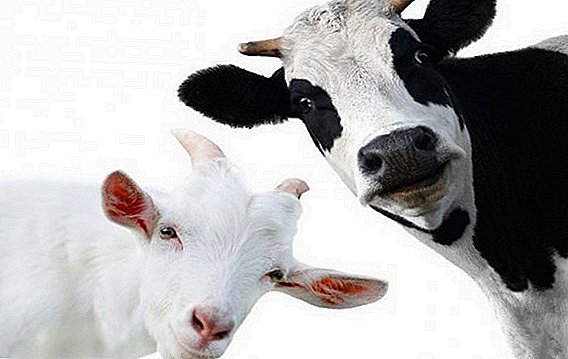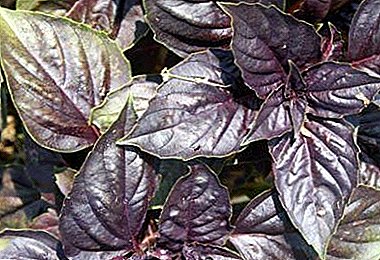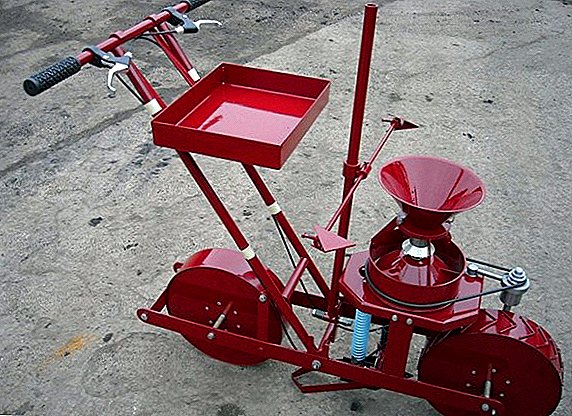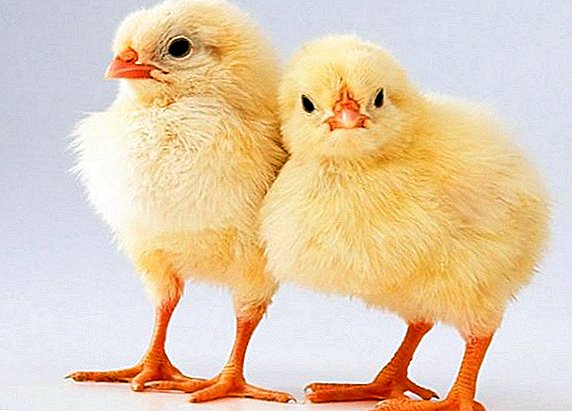 Many poultry farmers breed broiler chickens that are meat related. Bred them both on big poultry farms, and on rural farmsteads. Broilers that are grown at home are highly valued, as the owners do not pursue super-profits, and this is reflected in the quality of the products. Those who were engaged in such chickens, note that special difficulties in this matter does not arise. Our article will be useful to those people who are only at the beginning of the way to grow broilers in their farm.
Many poultry farmers breed broiler chickens that are meat related. Bred them both on big poultry farms, and on rural farmsteads. Broilers that are grown at home are highly valued, as the owners do not pursue super-profits, and this is reflected in the quality of the products. Those who were engaged in such chickens, note that special difficulties in this matter does not arise. Our article will be useful to those people who are only at the beginning of the way to grow broilers in their farm.
How do broilers differ from ordinary chickens?
The first thing you need to understand the distinctive features of broiler chickens. These chicks are always larger than ordinary ones, they have a massive body and, most importantly, rapid growth. At the age of one month, they weigh 1.5 kg, and in three - from 4 to 5 kg.
Important! Keep broilers away from other poultry dwellers, this will help avoid conflict situations.In addition, this type of hen is slow, with a calm character, does not like to move a lot.
Video: How do broilers differ from ordinary chickens?
How to choose a broiler chickens when buying
The right choice in our business is perhaps the most important thing. If you are a beginner, then be careful when buying, because for broiler chickens you can try to give the most ordinary.
It will be useful for you to read about how the broiler chickens look, also what are the norms of weight for broilers during all periods of life.
Therefore, it is best to purchase material from proven manufacturers, the best in the poultry farm. There is a guarantee of cleanliness of the breed and the relevant documents. If anything, you will know where to make a complaint.
When buying young individuals, pay attention to the following appearance details:
- the legs of the chicken are mobile, without any curvature or damage;
- eyes are shining, not clouded;
- klyuvik - even, light yellow, with the correct form.
 Consider the age of chickens. If you are a beginner poultry breeder, it is better to choose 1-2 weeks. Specialists of their work can tinker with daily babies, but this requires additional costs, both material and temporary.
Consider the age of chickens. If you are a beginner poultry breeder, it is better to choose 1-2 weeks. Specialists of their work can tinker with daily babies, but this requires additional costs, both material and temporary.Did you know? Word itself "broiler" derived from the English verb "to broil", which means "fry". And all because it is the meat of the chicken when cooking the most tender and tasty.
Experienced poultry farmers advise the following breeds, which have proven themselves well:
- ROSS-608 - is considered simply unique, because it is devoid of serious shortcomings. Differs in light skin and low growth, weight gain per day to 55 g.
- COBB-500 - excellent breed, not picky to feed. The bird has an interesting feature - yellow skin color, which attracts buyers.
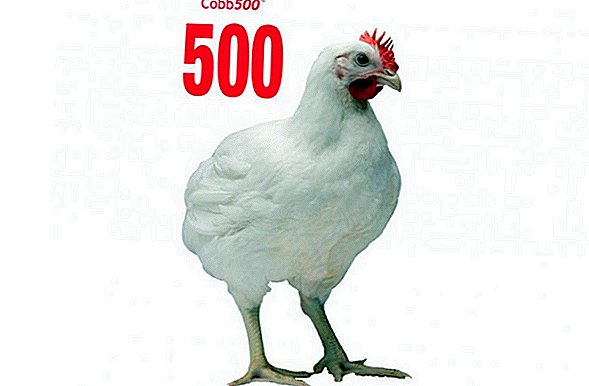
- BROILER-M - This is not only a meat bird, but also an egg. Has a small build, which is important when saving space.
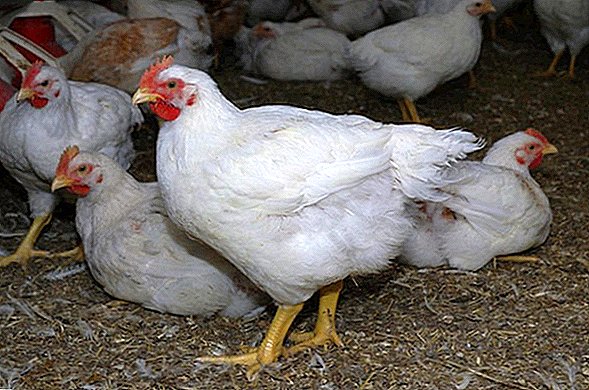
- BROILER-61 - four-line cross (a mixture of four breeds), with a good taste of meat. Among the shortcomings - you need to limit the food, otherwise the bones will not withstand great weight.

- GIBRO-6 - also a four-line cross, according to its characteristics, is very similar to the BROILER-61 type.

- CHANGE - a very popular cross, has delicious meat and eggs, good survival. The disadvantage is very sensitive to the temperature of the content at first.
Did you know? It turns out that at present the weight gain in chickens is 4 times higher than that of their predecessors in the middle of the 20th century. This figured out scientists from Canada at the University of Alberta.
What you need to grow broiler chickens
But before you buy broiler chickens, you need to prepare all the devices for their comfortable stay. 
You need to purchase:
- special lamps that are used for lighting and heating (they can be bought at pet stores);
- several feeders, based on the number of chicks (each should have free access to feed);
- quality drinkers (stop the choice on those that can not be flipped);
- Thermometer with which the temperature is controlled.
Important! If you keep broiler chickens indoors, then take care of good ventilation, you can consider buying a hood, but always with a thermostat.
What else should you take care
You also need to think about how to provide the necessary conditions for the content. 
Room Requirements
The room where your chickens will be kept should be of such size that up to 14 heads per one square meter. In addition, the room must be clean.
To do this, wash the walls and floors well, then lime. Install feeders, drinkers, lights, heating and a thermometer. On the floor necessarily need litter, the best of sawdust. Important! Keep the litter clean and dry, change it often, especially at first. Chicks should be dry, excessive moisture leads to diseases.
Cells
If the stock of broilers is not small, then it is best to prepare cages for their maintenance. This saves space and labor costs.  Cells can be bought ready-made, and you can make yourself from metal mesh, rods and frame. It is imperative that the bottom is reticulated, and under it is a pallet in which natural waste material will accumulate.
Cells can be bought ready-made, and you can make yourself from metal mesh, rods and frame. It is imperative that the bottom is reticulated, and under it is a pallet in which natural waste material will accumulate.
We advise you to read about how to make a cage and feeder for broiler chickens with your own hands.
Such a trick will reduce the time for cleaning and provide the chicks with dryness. The sides can be made of rods installed vertically at a distance of 3 centimeters for babies and 6 centimeters for adults. If necessary, the cells can be put on each other to save space.
Do I need to walk for broilers
But walking in the fresh air for broilers is not necessary. Although, if there is a small paddock next to their premises, then chicks can be released there for several hours during the warm time of the day. Long runs will lead to the fact that chickens will have to feed more than usual to achieve the required weight for slaughter. 
Broiler chicken care
Let us examine the rules of care for young broilers, depending on age.
Daily chickens
Such crumbs must be kept at a temperature of + 30-32 ° C and constant illumination. In the drinkers should be fresh, clean water, which can add a little potassium permanganate. Babies eat a lot and most importantly, so that each of them can freely approach the trough.
The litter will have to be changed very often, perhaps twice a day. Here you should not be lazy, because waste products cause increased humidity, and it is dangerous to the health of chicks.
Weekly broilers
After 7 days, the chicks will grow and mature. Lighting should still work around the clock. And only in the fourth week the light is temporarily turned off so that the young ones can rest.  The temperature should decrease by a couple of degrees every week. The rest of the requirements do not change. The changes will affect only power, but more on that later.
The temperature should decrease by a couple of degrees every week. The rest of the requirements do not change. The changes will affect only power, but more on that later.
Monthly Broilers
If the chicks are one month old, then you have overcome the most difficult period in growing. The temperature of the content during this period should reach + 22 ° C. The lighting at night is turned off, the light day should be 14 hours.
Find out what to do if broilers do not gain weight.
Change litter in about a day. Also make sure that there are no drafts. Keep troughs and troughs clean and rinsed daily.
Video: growing broilers
Chickens in two months
At this age, the bird reaches a weight of 2 kg. These are almost adult individuals that are kept at a temperature of + 18-20 ° C. They also need cleanliness and dryness in the room, sufficient amount of food and clean water.
What to feed broiler chickens
Separately, consider the issue of feeding broilers. After all, as you feed them, you will get such a result. According to experienced poultry farmers, it is the wrong diet that comes first in the list of reasons for the death of a bird.
Diet
Nestlings during the first week of life should be fed only with dry food, for example, with dry millet. Another type of feed the ventricles of the crumbs do not perceive. During this period, the maximum number of feedings is up to 8 times a day, the total amount of feed is 15 g. At the end of the first week you can already give starting feed for the sample, quite a bit.  A week later, the amount of feed gradually increase:
A week later, the amount of feed gradually increase:
- 30 g - age 2 weeks;
- 50-60 g - age 3 weeks;
- 80 g - age 4 weeks.
The number of feedings is reduced gradually, on reaching the age of one month - to two. Also, from the age of two weeks, greens are beginning to be given to chickens, these can be shredded green onions and nettle. At the same age, you can enter into the diet whey and curd.
Read more about how to properly feed broiler chickens, as well as how to give them nettles.
You can gradually accustom the bird to crushed corn, as well as add fish oil, ground egg shells, yeast to the feed. By the end of the first month of life, we give boiled vegetables to grown broilers: carrots, potatoes, cabbage, pumpkin.
Video: Feeding and Singing Chicks When broilers reach the age of one month, the basis of the ration will consist of various grain crushers: corn (50%), wheat, and barley. It is recommended to steam meat broth, mix with vegetables and other additives. Such food is prepared for one feeding. The total amount of feed at this age is about 120 g.
Important! Do not forget to give broilers chalk, bone meal, ground shells. This will saturate your pets with the right minerals.
If your chickens are two months old, the shreds can be replaced with whole grains. The rest of the diet remains the same. If you raise broiler chickens all year round, the ration will be different in cold and warm periods.
There is no fresh greens in winter; therefore, an alternative is needed, for example, germinated grains of wheat or barley. Also in the cold season it is more convenient to feed the chickens with ready-made feed in accordance with age. This, of course, will increase costs, but will avoid the problems associated with nutritional deficiencies. 
Vitamins for broiler chickens
For good growth, chickens must be given extra vitamins, especially in the first weeks. So, three days after the birth, you can drop each chicken a drop of Trivitamin into the beak separately. It can be bought in specialized stores.
You can also recommend various premixes - supplements that contain a complex of amino acids, vitamins and minerals. They also added antimicrobials. Buy premix best in veterinary stores.
We recommend that you familiarize yourself with the broiler chickens feeding system with antibiotics and vitamins, and also find out what vitamins to give to broiler chickens and what should be included in the veterinary first aid kit for broiler chickens.
A popular complex for broilers are Biovit and Vetom preparations. They, too, except vitamins and minerals, contain medicines.  For the cultivation of broiler chickens there are ready-made special feed of three types: starting, fattening and finishing. Each corresponds to the age of the chicken and contains all the necessary substances. But the use of this type of food is not everyone can afford.
For the cultivation of broiler chickens there are ready-made special feed of three types: starting, fattening and finishing. Each corresponds to the age of the chicken and contains all the necessary substances. But the use of this type of food is not everyone can afford.
How much does a broiler grow
At the age of two months, the weight of such a chicken can be within 2 kg. Therefore, in principle, it is possible to slaughter such individuals. But it is still better to wait for three months, when the weight of the bird will be 4-5 kg. So, now you know the basics of broiler chickens at home.
Learn more about why broiler chickens die, how to treat noncommunicable diseases in broiler chickens, and what to do if broilers sneeze and wheeze.
And if you decide on this, then purchase all the necessary fixtures, prepare the room and start the chickens. And we wish you success in this difficult task, and let your family enjoy quality chicken meat in about two or three months.
Video: growing broilers from day one to slaughter
Reviews from the network








